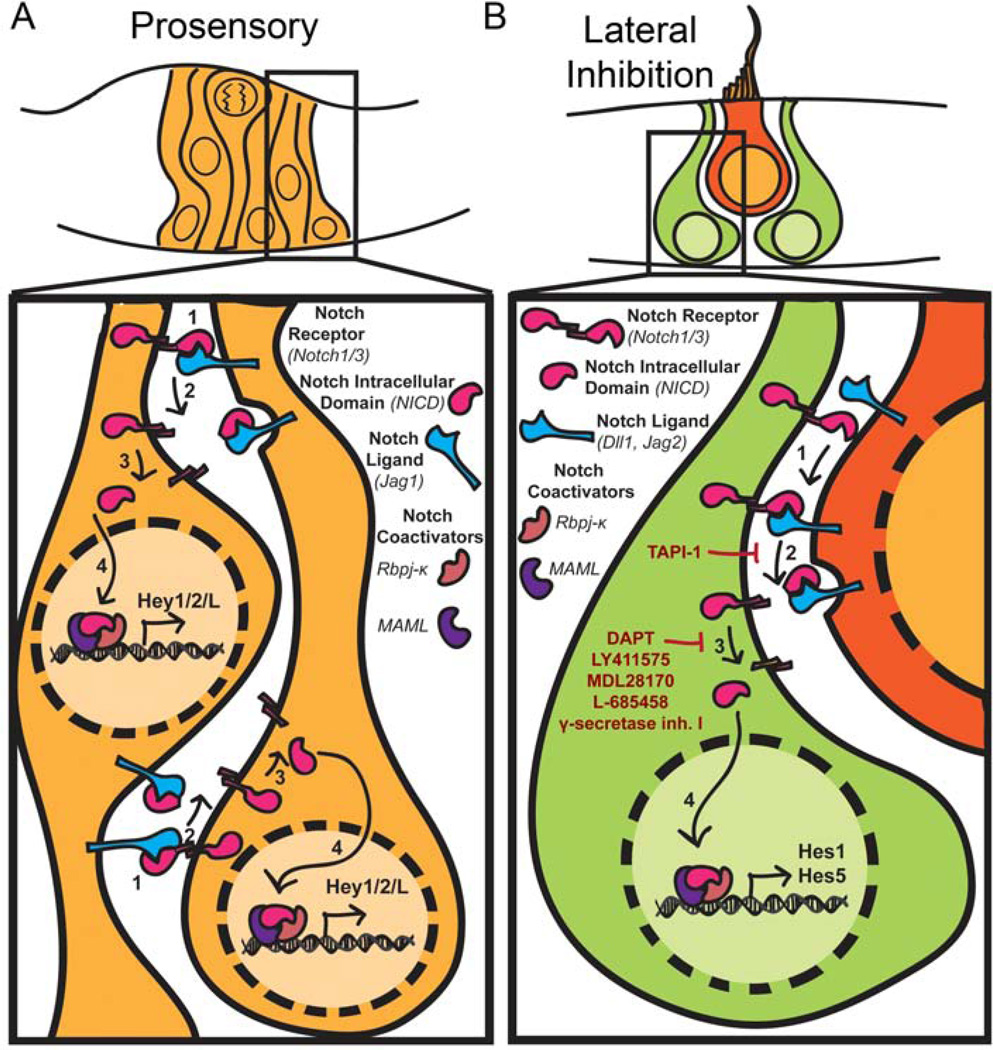Figure 3.
Notch signaling in the inner ear. A) During the development of the prosensory domains, progenitors express the Notch ligand Jag1 and have reciprocal signaling such that Notch is broadly activated throughout the prosensory domain. In these progenitors, Notch signaling appears to act through the Hey family of Notch effectors as inhibition of Notch signaling during the prosensory phase results in a down-regulation of Hey1 and Hey2B) Later in development, as hair cells differentiate they begin to express the Notch ligands Dll1 and Jag2. These ligands then bind to the Notch receptors on the surrounding cells, where Notch signaling is then activated. Here Notch signaling appears to largely act through Hes1 and Hes5 in order to inhibit the proneural bHLH, Atoh1, and prevent the cells from differentiating into hair cells. Through this mechanism, hair cells, become surrounded by support cells, forming a mosaic-like pattern in each of the sensory organs. Common inhibitors of the S2 and S3 cleavages are depicted in red.

